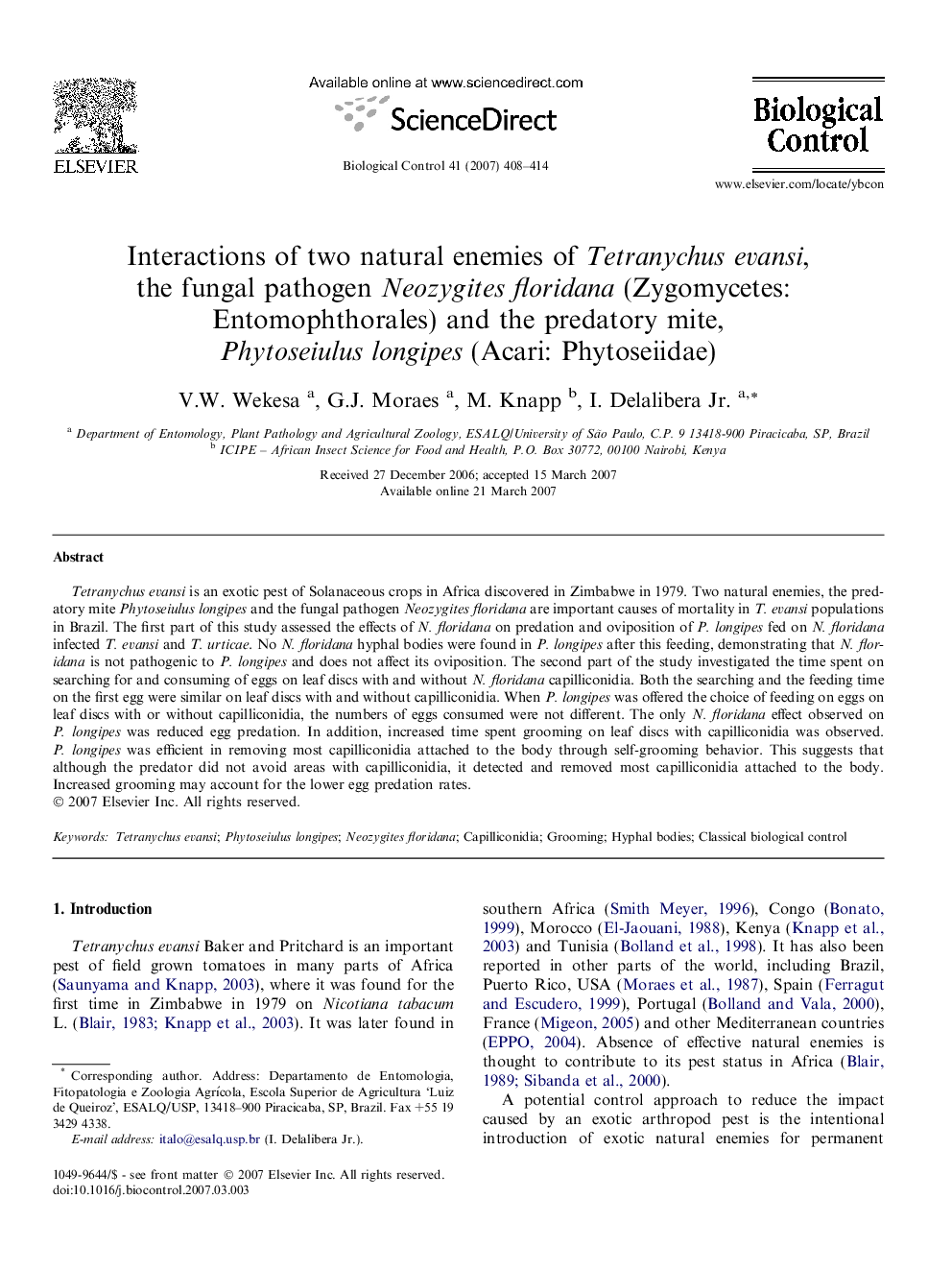| کد مقاله | کد نشریه | سال انتشار | مقاله انگلیسی | نسخه تمام متن |
|---|---|---|---|---|
| 4505161 | 1321130 | 2007 | 7 صفحه PDF | دانلود رایگان |

Tetranychus evansi is an exotic pest of Solanaceous crops in Africa discovered in Zimbabwe in 1979. Two natural enemies, the predatory mite Phytoseiulus longipes and the fungal pathogen Neozygites floridana are important causes of mortality in T. evansi populations in Brazil. The first part of this study assessed the effects of N. floridana on predation and oviposition of P. longipes fed on N. floridana infected T. evansi and T. urticae. No N. floridana hyphal bodies were found in P. longipes after this feeding, demonstrating that N. floridana is not pathogenic to P. longipes and does not affect its oviposition. The second part of the study investigated the time spent on searching for and consuming of eggs on leaf discs with and without N. floridana capilliconidia. Both the searching and the feeding time on the first egg were similar on leaf discs with and without capilliconidia. When P. longipes was offered the choice of feeding on eggs on leaf discs with or without capilliconidia, the numbers of eggs consumed were not different. The only N. floridana effect observed on P. longipes was reduced egg predation. In addition, increased time spent grooming on leaf discs with capilliconidia was observed. P. longipes was efficient in removing most capilliconidia attached to the body through self-grooming behavior. This suggests that although the predator did not avoid areas with capilliconidia, it detected and removed most capilliconidia attached to the body. Increased grooming may account for the lower egg predation rates.
Journal: Biological Control - Volume 41, Issue 3, June 2007, Pages 408–414